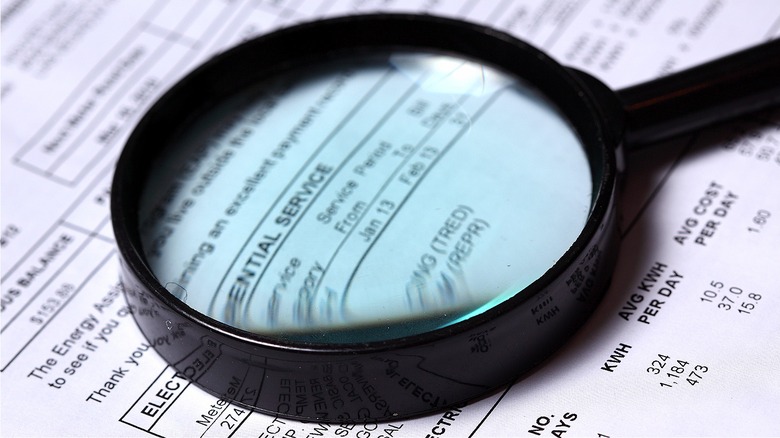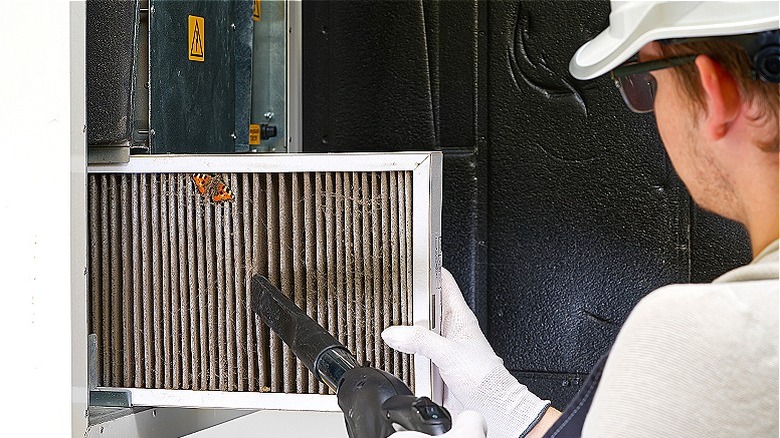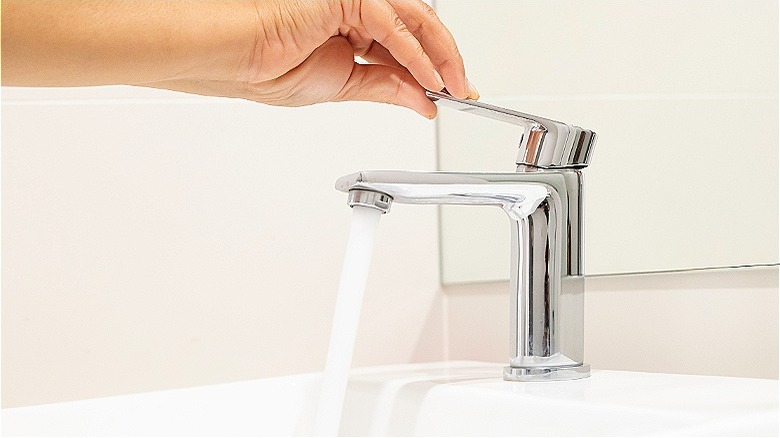Your Electric Bill Might Be Going Up For This Sneaky Reason
It turns out an electric furnace could be one reason why your home's electric bill is higher than it was before. According to EnergyStar.gov, the average American family spends $2,060 per year on utility bills. That amount includes not just electricity, but also gas, water, sewer, trash removal, and other services. Of those components, electricity is by far the biggest individual cost for home energy, with the average family paying $137 per month in 2022. That's a 13% jump over the average electrical bill in 2021 and the largest annual increase since 1984, when record-keeping started.
The reasons for the sudden increase are multifaceted, starting with extreme weather that required additional heating and cooling of homes to stay comfortable. There was also a hike in the cost of fossil fuels, such as coal and petroleum, which power the majority of power plants in the United States. Finally, we're simply spending more time at home in a post-COVID world, with a seemingly permanent increase in remote work, either partly or fully.
During colder months of the year, the use of electricity may rise even further, particularly if your home has an electric furnace. That's right, electric forced-air furnaces are famously expensive to operate compared to other alternatives. Still, there are some steps you can take to minimize "sticker shock" when your wintertime electric bill arrives.
Check your furnace's air filter
There's no getting around the fact that an electric furnace can be expensive to operate, and a big reason why your electric bill is so high during winter. But the cost to replace it — either with a newer, more efficient electric unit or one powered by an alternate energy source — can cost thousands upon thousands of dollars.
To maximize the efficiency of your existing furnace, make sure the air filter is clean and gets replaced or inspected regularly. A clogged or dirty filter requires the furnace to work harder to circulate air than with a clean filter. New filters are easy to install by homeowners or renters and are available inexpensively at hardware stores everywhere. How often you should replace your air filter depends on its size, as well as other factors like whether your household has pets. This said, the general guidance is to replace it every 90 days.
Another tip to conserve energy (and save on your energy bill) — not just with an electric furnace, but any heating system — is to purchase a programmable or smart thermostat to lower the temperature when you're sleeping or not at home. Finally, consider caulking or replacing the weatherstripping on drafty doors and windows so your furnace won't have to work as hard to maintain a comfortable temperature.
Address other energy vampires, too
In addition to an inefficient electric furnace, there could be other items in your home that are causing your electric bill to inflate. For example, your water heater. Did you know water heaters have a thermostat, also? Both gas and electric water heaters have a thermostat, though it may be hidden behind an access panel that requires unscrewing. (To avoid accidentally getting shocked when adjusting an electric water heater, it's always good practice to shut down power to the unit first by turning off the circuit breaker.)
For water heaters, the Department of Energy recommends a temperature setting of 120 degrees Fahrenheit for most households, which may be lower than the unit's factory default setting, which is typically 140 degrees Fahrenheit. That difference has the potential to reduce the cost of powering your water heater by as much as 10% overall.
Besides electric furnaces and water heaters, older refrigerators can grow less efficient over time — typically after eight to 10 years — requiring more electricity to operate, and a higher electric bill as a result. While it may not be worth replacing the appliance in terms of energy savings versus the upfront cost of a new unit, homeowners can try replacing the door seals or gaskets to better retain the cold air inside. These kits are typically available from the manufacturer for approximately $35 to $80. Finally, if you have an extra refrigerator or chest freezer in your garage or basement, consider whether it's worth the energy consumption and extra cost to keep it running constantly.


